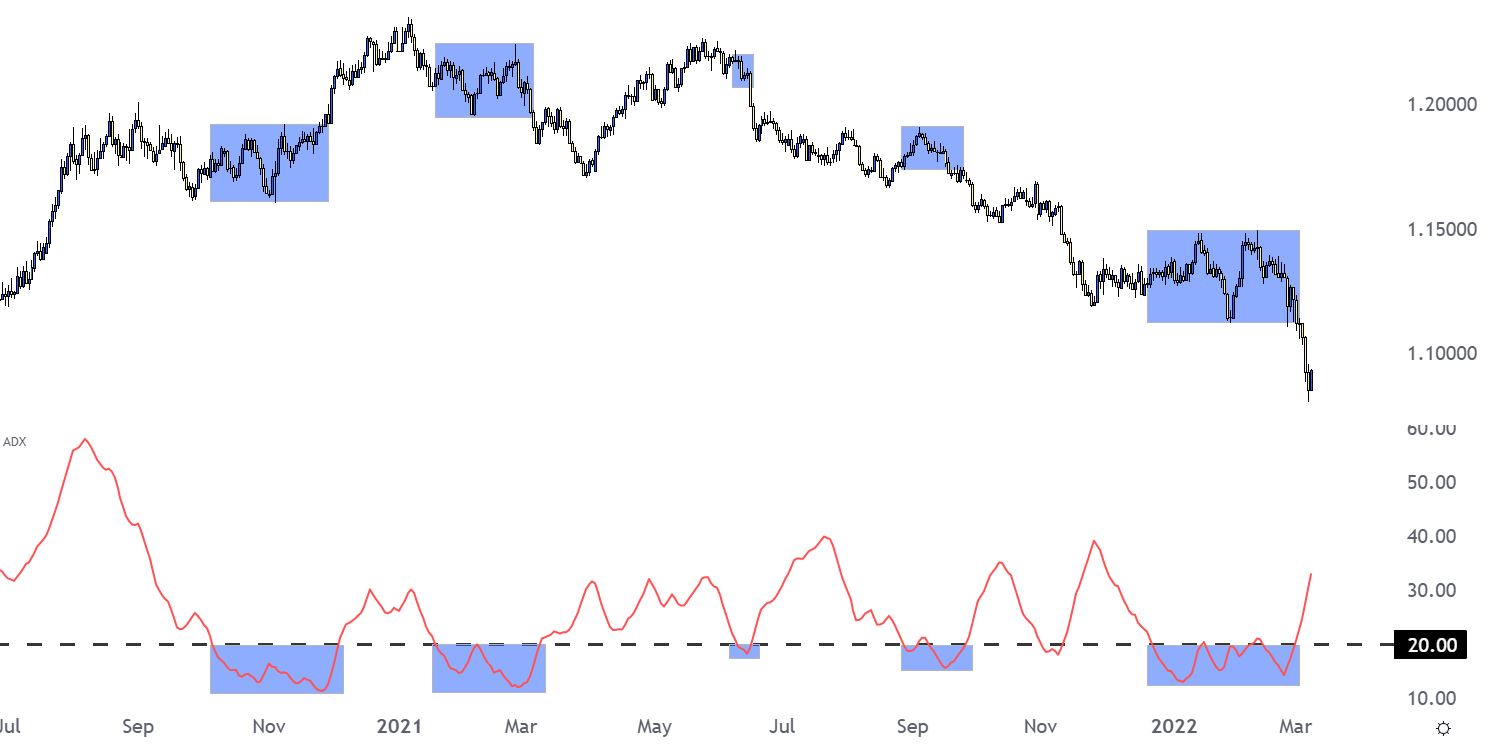How many different types of market environments are there?
To be sure, we can line out a litany of different backdrops that traders might find. But, if we reduce price movements to their lowest common denominator, there’s really only two things that a market can be doing, right?
Either a market is trending or it’s not. If prices are making fresh higher-highs and higher-lows we have an uptrend. If they’re making lower-lows and lower-highs, we have a down-trend. If it’s doing neither, we don’t have any trend at all.
That trend-less state is often called a ‘range’ but that can be misleading: Ranges usually have symmetry attached to them, with some element of even distribution at or around support and resistance, thereby helping to keep prices bounded in this narrow channel on the trading chart.
Recommended by James Stanley
The Fundamentals of Range Trading
For anyone who spends enough time analyzing charts will soon learn that perfect ranges rarely show up. This is the type of market environment that trading educators might need to spend 30 minutes or an hour to find a textbook range in order to illustrate their articles with what an even, perfect range might look like.
However, in practice this is misleading; because most of the trendless states that you’ll find in markets won’t have a lot of symmetry, and sometimes they’re just straight up messy. So first things first, let’s define a range.
What is a Range
A range is a market bound between support and resistance, displaying no discernible trend, which is then prone to mean reversion.
But identifying a range can be a subjective matter, as what might be a range to one trader may not appear as a range to another, and that’s before we even get into the matter of timeframes. Perhaps the market is ranging on the hourly but is that really a range if it’s just a pause point in a bigger-picture trend on the daily chart?
In our prior article on the Average Directional Index, or ADX, we looked at an indicator with the sole purpose of denoting trend strength. The benefit of such an indicator is that it’s not trying to do many things at once, it’s solely an indication of trend strength as denoted over the past x periods (with x being the input from the trader), commonly 14 periods.
Recommended by James Stanley
Building Confidence in Trading
When making use of this technical indicator, ranges can then be defined as environments in which ADX reads below the value of 20. As illustrated on the daily chart below, EUR/USD has the ADX indicator applied, and each instance of the indicator moving below 20 has been marked by a blue box with a corresponding blue box added on the price chart over that period.
EUR/USD Daily Price Chart
Chart prepared by James Stanley; EUR/USD, July 2020 – March 2022
Why Trade Ranges?
In global markets where many investors have access to stocks, currencies and commodities, there’s not a great reason to trade a market environment that you’re not comfortable with.
With that said, many traders elect to focus on ranges while ignoring breakouts or even trends. One of the main reasons traders will seek out ranges is consistency. It’s a simple if/then statement, which can allow for simpler risk management. If the range breaks, the trader probably doesn’t want to hang around in that environment for much longer.
Recommended by James Stanley
Traits of Successful Traders
And if we want to extend the conversation to include mean-reversion, this could also include reversals which are traditionally a dangerous type of environment to navigate because, by default, the trader is looking for something ‘new’ to happen. However, the luxury of such an approach is the clear lines of risk management that can be set. If a trader is looking to trade mean reversion off of a support level, and the support level then breaks, the trader can attempt to get out of the trade quickly with the goal of loss mitigation, rather than just sitting around and hoping that the trade comes back above their entry point.
Therefore, range trading offers a fairly clear line-in-the-sand for where traders can place their stops which can make one of the more important elements of a trading strategy (risk management) more easily addressable.
— Written by James Stanley, Senior Strategist for DailyFX.com
Contact and follow James on Twitter: @JStanleyFX


 Signal2forex.com - Best Forex robots and signals
Signal2forex.com - Best Forex robots and signals




